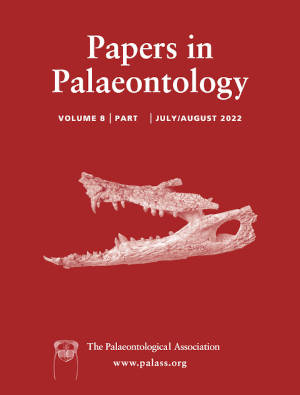Article: Shedding light on the enigmatic extinct insect order Glosselytrodea: new diversity and key morphological insights into non-tegmenized Permian forms
Publication: Papers in Palaeontology
Volume:
8
Part:
4
Publication Date:
2022
Article number:
e1452
Author(s):
Ricardo Pérez-de la Fuente, André Nel, and Markus J. Poschmann
DOI:
10.1002/spp2.1452
Abstract
Abstract Glosselytrodeans are enigmatic extinct (Permian–Jurassic) insects classified in their own order. The monophyly of Glosselytrodea is not universally accepted and its large-scale relationships remain problematic, namely because its diversity is largely known from hardened (i.e. tegmenized/‘elytrized’) forewings of allegedly derived forms. Thus, new data on the group’s early diversity and/or complete specimens are critical. Herein we describe the oldest glosselytrodean known, Moscheloptera phantasma gen. et sp. nov. (Permoberothidae), based on a forewing from the Niedermoschel black shale (Germany; early Permian). The holotype of Permoberotha villosa Tillyard (Permoberothidae) (a forewing) and a previously described complete conspecific specimen, both from Elmo (USA; early Permian), are reassessed and photographically figured for the first time. A new, complete P. villosa specimen from Elmo preserves body structures hitherto not reported among glosselytrodeans, including complex pretarsal claws and detailed male genitalia. The holotypes of two further species, Sylvaelytron latipennatum Novokshonov (herein transferred to Permoberothidae) and Archoglossopterum shoricum Martynova (Archoglossopteridae), are also reassessed and figured. An emended diagnosis and an updated catalogue of the Glosselytrodea are provided. Glossopterum Sharov is returned to its own family: Glossopteridae Sharov. Our findings substantially expand the knowledge of the Permoberothidae, which is the earliest glosselytrodean lineage and lacks sclerotization-related forewing specializations. Although the exact phylogenetic position of glosselytrodeans is still unresolved, the female and male terminalia described herein almost certainly support them as early holometabolan insects, possibly closer to the mecopterid rather than the neuropteroid lineage. Shedding light on Glosselytrodea improves our understanding of the early evolution of the Holometabola.
